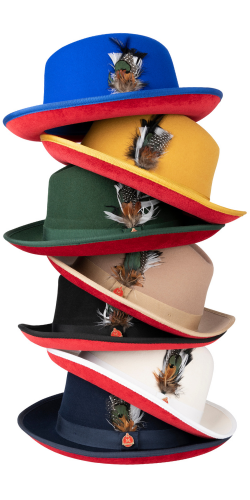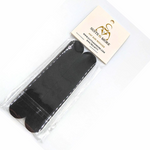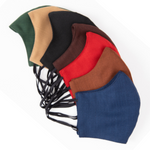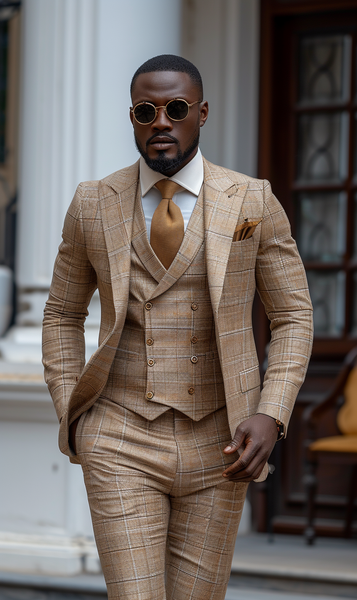The Sartorial Symphony: Mastering the Art of the Suit
In the grand theater of life, a well-styled suit is more than mere attire; it's a statement, a performance, a declaration of self. The rules of suit styling are not just guidelines but the very notes that compose the sartorial symphony. As we explore these ten commandments further, consider each not as a constraint but as an opportunity to refine your personal style narrative.
1. The Perfect Fit is Key: The Tailor's Art
A suit should be a second skin, not a disguise. The perfect fit starts with the shoulders, where the seam should sit precisely where your shoulder ends, no more, no less. The jacket should close comfortably without strain; a single finger should slide easily between the buttoned jacket and your chest. Trousers should kiss the top of your shoes, creating a slight break — a subtle nod to tradition that keeps the look grounded in the present.
2. Understanding Suit Colors: The Palette of Power
Each color in a man's suit repertoire holds its own power and purpose. Navy evokes authority and trustworthiness, making it ideal for business. Grey offers versatility, easily transitioning from formal to casual with the right accessories. Black, the epitome of formality, commands respect and attention. For those daring to defy convention, lighter hues and vibrant patterns await, ready to make a statement of individuality and flair.
3. Selecting the Right Shirt: The Canvas of Contrast
A shirt under a suit is the canvas upon which your style is painted. The right shirt enhances the suit's color, adding depth and dimension. A crisp white shirt is a universal soldier, ready to serve under any color. However, venturing into patterns or pastels can elevate a suit to a personal statement, reflecting mood, occasion, or simply a flash of creativity.
4. The Importance of Proper Footwear: Foundations of Style
Shoes are the foundation of any outfit, especially a suit. They can subtly accentuate the suit’s style or, when chosen poorly, distract and detract. The elegance of an Oxford, the casual charm of a loafer, the understated sophistication of a brogue — each has its place. The key is harmony between the style of the suit and the statement of the shoe.
5. Accessorizing with Ties and Pocket Squares: The Flourish
Ties and pocket squares are where personality shines through. They are the flourish, the final touch that can tie an entire look together (pun intended). The secret lies in balance — a vibrant tie against a subtle suit, a patterned pocket square adding life to a solid ensemble. The only rule here is to avoid matching too precisely; it's about complementing, not cloning.
6. Belt or No Belt?: A Question of Silhouette
To belt or not to belt, that is the question. A belt can provide a finished look, a visual separation between the jacket and trousers. However, a perfectly fitted suit, especially one with side adjusters, may not need a belt. The choice affects the suit's silhouette and should be made with an eye toward the overall harmony of the outfit.
7. Mastering the Art of Suit Buttoning: The Code
The unspoken code of suit buttoning holds that the bottom button of a jacket remains forever undone. Why? It’s a nod to tradition, to comfort, and to the drape of the fabric. It’s a subtle cue that you know the code, that you belong to the club of the well-dressed.
8. Tailoring is Your Friend: The Personal Touch
A relationship with a good tailor is a lifelong friendship worth cultivating. Off-the-rack suits are merely the beginning; a tailor’s touch can elevate them to something uniquely yours. It's about enhancing the fit, adjusting lengths, and refining silhouettes. Tailoring is not a luxury but a necessity for the man who takes pride in his appearance.
9. Seasonal Suit Fabrics: The Year-Round Wardrobe
Just as we adapt our lives to the changing seasons, so too should our suits. Wool for the chill of winter, linen for the warmth of summer, and a myriad of blends for the seasons in between. Understanding fabric weights and weaves is crucial to comfort and style, ensuring that you're as appropriate to the season as you are to the occasion.
10. Maintenance and Care: The Suit's Longevity
A suit cared for is a suit loved. Regular maintenance, mindful storage, and judicious cleaning ensure that your suit remains a faithful companion for years to come. It's about respecting the fabric, the construction, and the craft. After all, a well-maintained suit is a testament to the man who wears it.
Closing: The Craft of Suiting
These ten rules are your foundation in the art of suit styling. Remember, the goal is not just to wear a suit but to wear it with intention, with style, and with an eye for the details that signal you know what you’re doing. Let your suit be an extension of your personal brand, a statement of who you are and how you approach the world.
Dive deeper into the world of fashion with more tips, tricks, and style insights. And if you're looking to refine your personal style further, visit our Suits & More collection.
Read More












